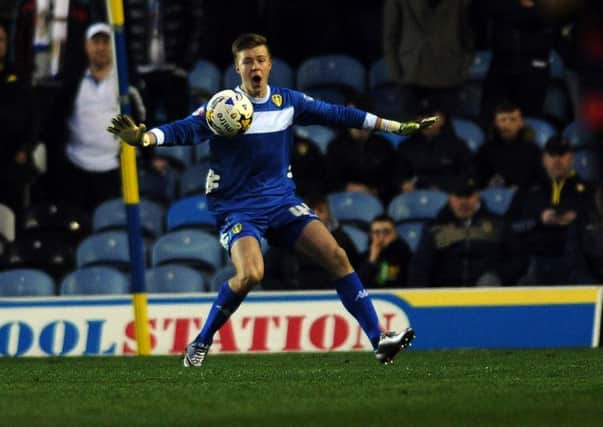Phil Hay: Leeds United academy is continuing to prove a major asset


Nonetheless, Leeds were in the market for opportunities, well-enough connected to be aware of Peacock-Farrell’s availability and diligent enough to bring him on to the point of a first-team debut. That is how good academies work. Not every kid can be on the books from primary-school age.
Peacock-Farrell’s first-team debut, wherever it leads him in the long term, continues a tradition of development at Thorp Arch which, in crude terms, has equated to at least a player a season for almost as long as the academy has existed.
Advertisement
Hide AdAdvertisement
Hide AdAs is regularly said, the productivity of United’s set-up is statistically undeniable; for them and for rival clubs. Leeds are under sustained pressure and constant risk of offers for junior players, many of whom are too young to have any public profile. But the flow to the senior squad refuses to dry up.
Peacock-Farrell himself had no particular profile until Ross Turnbull’s injury and Charlie Horton’s return to the USA put his ducks in a row before Christmas, installing him as understudy to Marco Silvestri. Before long, Steve Evans was describing the 19-year-old goalkeeper as a future Premier League player and a suitable number two. Leeds, meanwhile, have been talking to him about a new contract for many weeks, aware that a teenage keeper on the bench in the Championship is a magnet for scouting trips.
Ideally, the club would have preferred to agree new terms with him before he was fully exposed to prying eyes in a first-team match, but Silvestri’s red card against Rotherham United last weekend took the decision on timing out of their hands.
Staff at Leeds were optimistic that Peacock-Farrell would slip into the team with the minimum of fuss against QPR and justify their decision to leave Silvestri without more cover. In the event, minimum of fuss was the phrase.
Advertisement
Hide AdAdvertisement
Hide AdPeacock-Farrell’s contract ends in June and, as football works, he is due a pay rise from United. The deal he received last summer was his first as a professional and the offer made to him did not involve any negotiation. On this occasion, Leeds can see that other clubs like the look of him and could pilfer him for limited compensation.
Crystal Palace’s chief scout was present at Rotherham on Saturday.
That said, those who know how Peacock-Farrell is thinking say money is of less importance to him than his immediate prospects. Currently Leeds have Silvestri as first choice, tied to a four-year deal which ends in 2018.
They have 31-year-old Turnbull, a former Chelsea keeper, returning soon from a broken ankle and under contract for another season. Peacock-Farrell has been a senior substitute at Elland Road for almost five months and is now a debutant. It would only be natural for a 19-year-old of some repute to want to stay as close to the fray as he has been recently.
Advertisement
Hide AdAdvertisement
Hide AdThis classes as a healthy dilemma for Leeds, a scenario their academy should be creating.
There is no merit yet in drawing comparisons between them, but Paul Robinson’s ascent to the bench in the late 1990s was down in part to his talent and in part to circumstances. Mark Beeney ruptured an Achilles tendon and the club decided that Robinson was ready to deputise for Nigel Martyn. It turned out that, as a keeper, Robinson was extremely gifted (and needless to say, the academy staff at Thorp Arch knew it). But he was present and ready because the programme prepared him.
Last week, Leeds parted company by mutual consent with their academy director, Paul Hart, the second person to leave that job in the space of nine months. His exit was more amicable than Neil Redfearn’s last year but it still leaves a crucial role to fill at a time when many in the academy think patience and close attention is needed.
United have had a good run from their youth-team ranks, a steady flow of players to the first team over many years, but the prevailing view is that the current crop of Under-21s and Under-18s might not bear the same fruit. The club have already released Chris Dawson and Luke Parkin this season and others from the development squad will follow when the season ends. United see the lower age groups, the Under-16s and Under-15s in particular, as bigger pools of talent.
Advertisement
Hide AdAdvertisement
Hide AdAnd yet, Peacock-Farrell emerges all the same. Someone always seems to. Which explains why in a recent Premier League study of the most productive academies in England, United’s was ranked second. There are challenges in youth development and problems inherent with working as a category two academy, below the highest tier, but Leeds’ academy is well worth fighting for. It always has been.